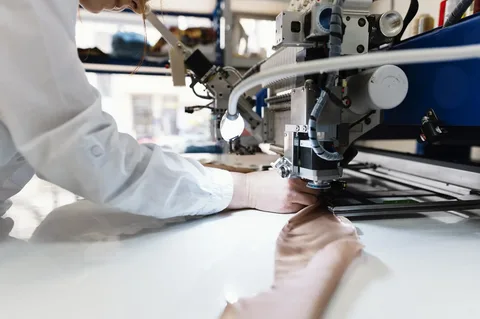The fashion industry is one of the largest and most impactful industries in the world. From design to production, distribution, and consumption, fashion touches nearly every part of our lives. However, the industry has faced significant scrutiny over its environmental and social impacts. In recent years, a growing movement toward sustainable practices in the apparel factory industry has emerged, shifting the focus toward more responsible and ethical manufacturing processes. Sustainable practices in the apparel factory industry are becoming the new standard for fashion, reshaping how brands operate and how consumers view the impact of their purchases.
The Importance of Sustainability in Fashion Manufacturing
Sustainability in the apparel industry is essential for mitigating its environmental footprint. The traditional model of fast fashion relies on mass production, cheap labor, and overconsumption, which often leads to significant waste, pollution, and exploitation of workers. With the rising concern about climate change, pollution, and fair labor practices, it is clear that the fashion industry must evolve. Implementing sustainable practices in the apparel factory industry can help reduce waste, conserve resources, and create safer and more ethical working conditions for factory employees.
Reducing Environmental Impact
One of the most important aspects of sustainable fashion is reducing the environmental impact of production processes. Traditional apparel factories consume large amounts of water, energy, and raw materials, all while emitting harmful chemicals and greenhouse gases. Sustainable practices, such as the use of eco-friendly fabrics, waterless dyeing techniques, and energy-efficient machinery, help reduce the carbon footprint of factories.
For instance, many apparel manufacturers are now opting for organic cotton, which uses fewer pesticides and requires less water than conventional cotton. Additionally, recycled materials, such as polyester made from plastic bottles, are becoming increasingly common in production lines. These practices not only reduce waste but also minimize the industry’s overall environmental damage.
Fair Labor Practices
In addition to environmental sustainability, fair labor practices are crucial to the transformation of the apparel factory industry. Ethical labor practices ensure that workers are paid fair wages, work in safe conditions, and are treated with dignity and respect. The adoption of sustainable practices in factories often includes measures to improve working conditions, provide better healthcare for employees, and ensure that workers’ rights are upheld.
Several apparel brands have begun to source their products from factories that are certified by fair trade organizations, which guarantees that workers are paid fairly and work in humane conditions. As consumers become more aware of these issues, they are increasingly demanding transparency from brands about where and how their clothing is produced.
Innovations in Sustainable Apparel Factory Practices
As sustainability becomes a central focus for the apparel industry, innovations in manufacturing technology and processes are playing a vital role in reducing the industry’s negative impact. New advancements, such as 3D knitting, digital fabric printing, and zero-waste design, are helping factories produce garments more efficiently and with less environmental cost.
3D Knitting Technology
3D knitting allows designers and manufacturers to create garments directly from digital designs without the need for traditional fabric cutting. This method significantly reduces waste, as it eliminates the need for leftover fabric scraps that typically end up in landfills. Moreover, the technology enables more precise garment production, leading to fewer returns and reducing overproduction.
Waterless Dyeing Techniques
Another innovation driving sustainability is waterless dyeing. Traditional dyeing methods consume vast amounts of water, which is often contaminated with toxic chemicals. Waterless dyeing technologies use alternative methods, such as CO2-based dyeing, which eliminate the need for water and reduce harmful emissions. This technology is revolutionizing the way garments are dyed, making the process more eco-friendly.
Consumer Demand for Sustainable Fashion
Consumers today are more conscious of the environmental and social impacts of their purchases than ever before. The growing demand for sustainable fashion is pushing brands and factories to adopt more responsible practices. From online marketplaces to in-store purchases, shoppers are increasingly prioritizing sustainable products over fast fashion items.
As a result, fashion companies are responding by adopting sustainable practices in the apparel factory industry, improving product transparency, and providing consumers with more sustainable choices. Labels such as “organic,” “fair trade,” and “recycled” are now common on clothing tags, signaling the shift toward a more sustainable future for fashion.
Conclusion: A New Standard for Fashion
The transition toward sustainable practices in the apparel factory industry is not just a trend but a necessary shift to preserve the environment and protect workers’ rights. As the industry adapts to this new standard, innovation and consumer demand will continue to drive change. By adopting eco-friendly materials, reducing waste, and improving labor conditions, the apparel industry can pave the way for a more sustainable and ethical future.
Sustainable practices in the apparel factory industry are no longer an option but a necessity for companies aiming to stay relevant in an increasingly environmentally conscious world. The fashion industry’s move towards sustainability is not just changing the way clothes are made; it’s also changing the way we think about fashion itself.
